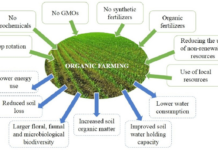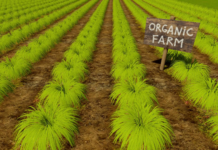Permaculture Methods: A permaculture is an strategy to sustainable meals manufacturing and land administration that seeks to imitate the patterns present in nature. It was developed in Australia within the Nineteen Seventies by Invoice Mollison and David Holmgren and has since unfold world wide. Permaculture strategies use numerous strategies—from soil conditioning to crop rotation—to create a self-sustaining system the place assets are managed responsibly. On this weblog submit, we’ll dive deeper into permaculture strategies, exploring their historical past, targets, and the way they are often carried out to assist create a extra sustainable future.
What’s permaculture?
Permaculture is a system of agriculture that focuses on creating sustainable ecosystems. It’s primarily based on the rules of ecology and goals to develop self-sufficient methods able to supporting themselves over the long run. Permaculture techniques typically embrace numerous components, resembling meals manufacturing, water administration, and waste recycling.
The 12 rules of permaculture
In permaculture, 12 rules information to design and decision-making. These rules are:
1. Observe and work together: By taking the time to watch the pure world round us, we will be taught so much about how ecosystems work and what we will do to imitate them in our personal designs.
2. Catch and retailer power: The solar is the final word renewable power supply. By capturing photo voltaic power by way of issues like photo voltaic panels and wind generators, we will create an limitless provide of energy that does not pollute the atmosphere.
3. Receive a yield: When making a permaculture system, it is important to make sure that you get a constructive funding return. This may be within the type of meals, gas, or different assets.
You can even see How the 12 Requirements of Permaculture can change your nursery
4. Apply self-regulation and settle for suggestions: In any system, there’ll all the time be some damaging suggestions loops that should be handled. We will hold our techniques wholesome and productive by being proactive and getting suggestions.
5. Use and value sustainable belongings and administrations: Renewable assets are these that can by no means run out (e.g., daylight, water). We should always use these assets as a lot as potential and worth them accordingly.
6. Produce no waste: Waste is something that is not being utilized by the system; it is simply taking on area and assets with out contributing something constructive. In permaculture, we attempt to create a system the place nothing goes to waste.
7. Design from patterns to particulars: It is vital to begin with the large image and work our means right down to the small particulars. This permits us to design an environment friendly system that meets our wants.
8. Combine relatively than segregate: We will create a extra various and resilient system by integrating completely different components into the identical area. This additionally makes it simpler to make use of assets effectively.
9. Use small and sluggish options: Massive change is usually too difficult or costly to implement. As a substitute, give attention to small modifications which might be simple to implement and may be scaled up over time.
10. Use and worth range: Range is crucial for any wholesome ecosystem; it helps promote resilience within the face of unpredictable situations and reduces the danger of illness or pests affecting complete populations of vegetation or animals.
11. Use edges and worth the marginal: Some great benefits of an ecosystem are sometimes the best components as a result of they mix completely different components resembling soil, water, solar, and so on., in a single place. We will enhance our yields by making the most of these edges with out spending a lot effort or assets.
Permaculture design strategies
Permaculture design strategies are primarily based on rules that mimic the patterns and relationships present in pure ecosystems. The purpose is to create a self-sustaining and regenerative system, offering for all its members’ wants whereas additionally bettering the well being of the bigger atmosphere.
There are various completely different permaculture design strategies, however some widespread components embrace utilizing indigenous vegetation, integrating animals into the system, utilizing pure supplies and assets, and selling organic range. Permaculture techniques are sometimes designed to fulfill the precise wants of the location and local weather the place they are going to be carried out.
One among permaculture’s vital targets is to create resilient techniques to alter and disturbance. This implies creating redundancies and buffers inside the system in order that it may proceed functioning even when a part of it’s broken or eliminated. For instance, a permaculture backyard would possibly embrace a various mixture of vegetation in order that the others can nonetheless thrive if pests assault one species.
Permaculture design strategies may be utilized to any scale, from a person yard backyard to a big farm and even a complete metropolis. When correctly designed and managed, permaculture techniques have the potential to fulfill all our wants whereas additionally enhancing the well being of our planet.
Permaculture strategies
Permaculture gardening strategies are primarily based on the rules of pure ecosystems. They’re designed to create self-sustaining gardens which might be low upkeep and require little enter from the gardener.
There are a number of important permaculture gardening strategies:
1. Design your backyard utilizing the precept of zoning. This implies creating completely different areas in your backyard for different actions, resembling a food-production space, a gathering space, and a kids’s play space. This helps to take advantage of environment friendly use of area and assets.
2. Use companion planting. It is a method the place you plant vegetation which have complementary properties subsequent to one another. For instance, planting tall vegetation subsequent to quick vegetation can present shade and wind safety for the shorter vegetation. Companion planting can even assist to draw helpful bugs to your backyard, and deter pests.
3. Create mulch layers. Mulching is an effective way to preserve water and suppress weeds in your backyard. A mulch layer is solely a layer of fabric (resembling straw, leaves, or wooden chips) that you just unfold over the soil floor. Mulch layers assist to maintain the soil moist and funky in summer season and shield it from erosion in winter.
4. Use rainwater harvesting. Gathering rainwater is an effective way to save lots of and scale back your reliance on the mains water provide. You may gather rainwater in barrels or tanks to water your backyard throughout dry intervals.
5. Implement permaculture rules. Permaculture is predicated on rules that intention to create a sustainable and environment friendly ecosystem. These embrace working with nature, utilizing renewable assets, and growing autonomous techniques. Making use of these rules in your backyard may help create a low-maintenance and productive backyard.
Permaculture farming strategies
Permaculture is an agricultural apply that mimics the patterns and relationships present in pure ecosystems. It’s a holistic land administration strategy that emphasizes utilizing indigenous vegetation, animals, and fungi to create a extra sustainable and productive agricultural system.
Permaculture farming strategies embrace utilizing native vegetation and animals to create a extra environment friendly and sustainable agricultural system. For instance, planting nitrogen-fixing vegetation resembling legumes can enhance soil fertility, whereas grazing animals resembling goats may help management weeds. Permaculture additionally consists of utilizing water catchment and storage techniques to scale back the necessity for irrigation and incorporating permaculture rules into homestead design to create a extra self-sufficient life-style.
The advantages of permaculture
There are various advantages to utilizing permaculture strategies in your backyard or homestead. Permaculture is an ecological design system that imitates the patterns and relationships present in nature, so it’s a extra sustainable means of gardening or farming. It will probably assist preserve assets, enhance yields, and create a extra various and resilient ecosystem.
Permaculture can scale back your dependence on inputs from outdoors your property, resembling water, fertilizer, and power. You should utilize pure processes for biking these assets again into your system, making it extra self-sufficient. When performed accurately, permaculture techniques may be poor in upkeep since they’re designed to imitate pure ecosystems.
Along with being extra sustainable, permaculture techniques may also be extra productive than conventional gardens or farms. You may benefit from restricted area and assets utilizing strategies resembling companion planting and stacking features. You may also create microclimates that are perfect for particular vegetation or animals.
Total, permaculture offers a extra holistic strategy to gardening or farming that may profit each folks and the atmosphere.
Conclusion
Permaculture strategies provide an efficient and sustainable solution to handle assets holistically. By incorporating rules of ecology, sustainability, and pure design into agricultural practices, permaculture strategies may help restore steadiness and well being to our ecosystems. With this data, we’re higher geared up to make acutely aware choices that can profit our surroundings in the long term.













